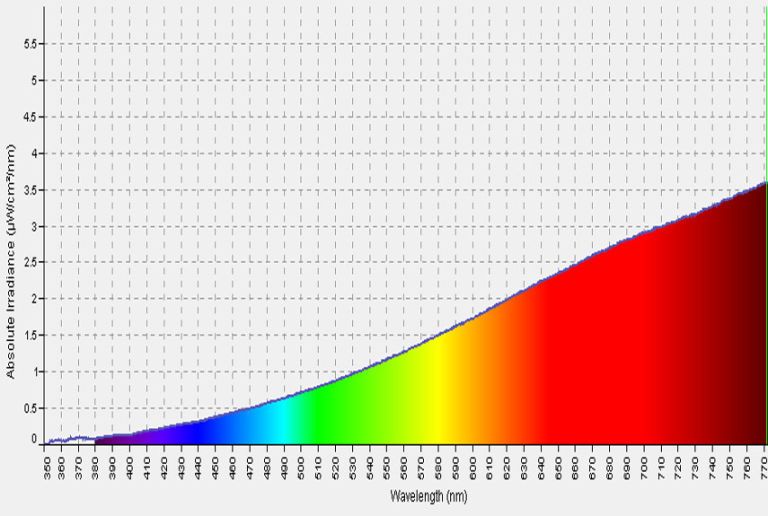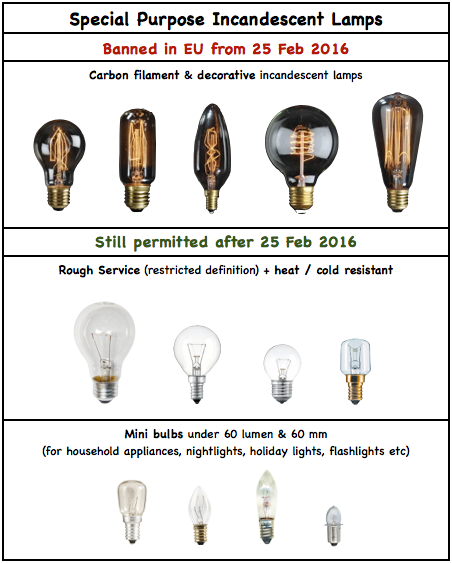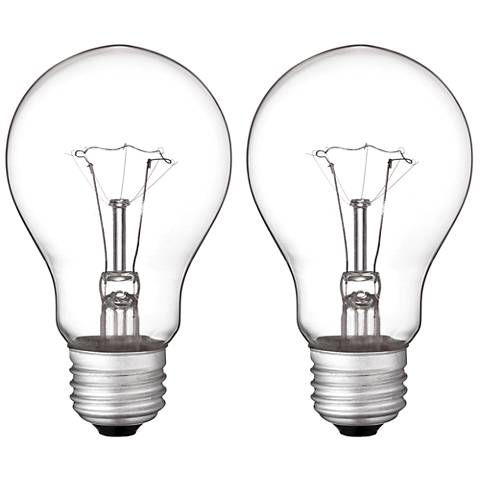Important points to remember from the interview. The visible light spectrum is the wavelength range visible to the naked eye.

Incandescent Light Bulb Types Bulbs Com
Incandescent Lighting vs Light Emitting Diode LED Comparison Correlated Color Temperature read more here LEDs are available in a wide range of color temperatures that generally span from 2200K-6000K ranging from warm yellow to light or cool blue.

. An absorption line spectrum in which specific colors are missing from the rainbow. The two basic types of. Matching the CFL spectra with the human-eye spectrum the solar spectrum and the incandescent spectrum.
Comparing IL Incandescent Light Bulb and LED Light Emitting Diodes and CFL Compact Fluorescent Light Bulb for Energy Efficiency. Emission even extends into the infrared part of the electromagnetic spectrum which wastes energy and reduces the overall efficiency of the bulb. Incandescent lamps can be categorized as conventional or halogen according to the fill gas and pressure in the lamp which affect efficiency life and color.
1999 T HEPHYSICSTEACHER 521 for visible light production and their light is quite reddish-yellow. Incandescent bulbs are also available in a range of color temperatures. 450 nm 400 nm 500 nm 550 nm 600 nm 650 nm 700 nm 10pts Summarize your observations on the emission spectrum of the incandescent light bulb.
The typical resistance of the tungsten filament of a 60 watt incandescent light bulb when it is turned off is 24 ohms and its resistance when operating from a 120 volt power source is 240 ohms. An incandescent light bulb Which statement best describes the spectrum you see located in the middle of the window. A 32 W 1 W 1 Js lamp generates violet light at a wavelength of 420 nm.
As discussed above an incandescent light bulb produces a continuous spectrum. Since energy is inversely proportional to wavelength E 1λ. Take that in for a minute.
All incandescent lamps emit both visible light energy and infrared waves heat. A continuous spectrum which looks like a rainbow of light. An incandescent lamp produces all colours of the visible spectrum with wavelengths ranging from approximately 400 nm violet to 700 nm red.
Because a metal filament produces the light an incandescent bulb produces a continuous visual range. A light fueled by electricity is known as an incandescent lamp. This change correlates with their temperature as they cool in the air.
The emission spectrum in the visible range of a typical incandescent bulb. Humans cant notice a lot of waves yet theyre there. Explain Like Im Five is the best forum and archive on the internet for layperson-friendly.
Incandescent light bulb viewed through a spectroscope. Answer 1 of 6. Low-temperature fil- a ments 2500 to 2700 K are particularly rich in red spectral energy and tend to bring out red in skin complexions making people appear healthier.
There are three basic types of spectra. The point at which light has gone from the refractive mode to the reflective mode. An incandescent lamp produces a relatively small amount of the.
A spectrum of colors with large dark spaces between them. 100 5 ratings From the given spectrum of the incandescent light bulb we can clearly say that wavelength of V. 198m members in the explainlikeimfive community.
For the tungsten which is the main element of the incandescent lamp filament the average value of α is 510-3 Therefore by measuring the resistance value at room temperature R 0 for example with an ohmmeter multi-meter and calculating R T from the measurement of the potential difference and electric current intensity of the lamp on. A very well-known source of a continuous spectrum is the sun. However incandescent bulbs arent the only light source that produces a continuous spectrum.
And an emission line spectrum in which we see light only with specific colors against a. The point at which light has crossed the boundary layers from one index to another. A quantum of 400 nm violet light has more energy than one of 700 nm red light.
Infrared light particularly near infrared light is healing. The light-emitting principle of incandescent lamps is to generate heat when current passes through the filament and the filament is heated to the incandescent state of 2000 degrees Celsius to emit light. Incandescent lights produce light by superheating an object that acts like a blackbody which defines its emission spectrum.
The comparison is for 40 60 75 100 and 150 watts IL bulbs. A huge benefit of incandescent is that as Dr. The term critical angle describes.
This is why to get a colored light you have to filter the emissions down to just the desired color. The IR lamps have a thin infrared reflecting coating on the inside. Without it our bodies would not be able to repair.
The reason why tungsten is chosen as the filament among many metals is ba. The incandescent metal embers of the spark used to light this Bunsen burner emit light ranging in color from white to orange to yellow to red or to blue. Line voltage or low voltage according to the electric current that powers the lamp.
Light-emitting diodes however generate light by different physics. Basic Physics of the Incandescent Lamp Lightbulb Vol. The term electric lamp is a general one.
The point at which light becomes invisible. An incandescent bulb emits a greater proportion of red light than natural daylight. It refers to a slice of technology that produces light from electricity and how it does this can vary.
The point at which light is refracted. View the full answer. Generally an incandescent light.
Wunsch describes in detail the lighting spectrum from incandescent bulbs includes infrared light. This coating allows light to pass through but blocks IR rays which bounce back and further.

Ultimate Light Bulb Test Incandescent Vs Compact Fluorescent Vs Led

Incandescent Lamps Greenwashing Lamps

How An Incandescent Light Bulb Works Ideas Advice Lamps Plus
0 Comments